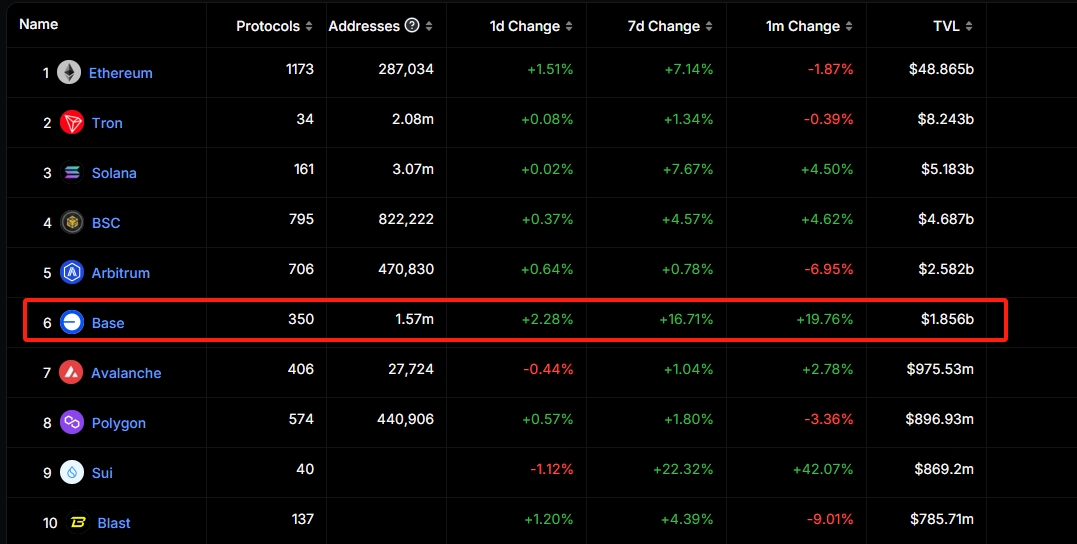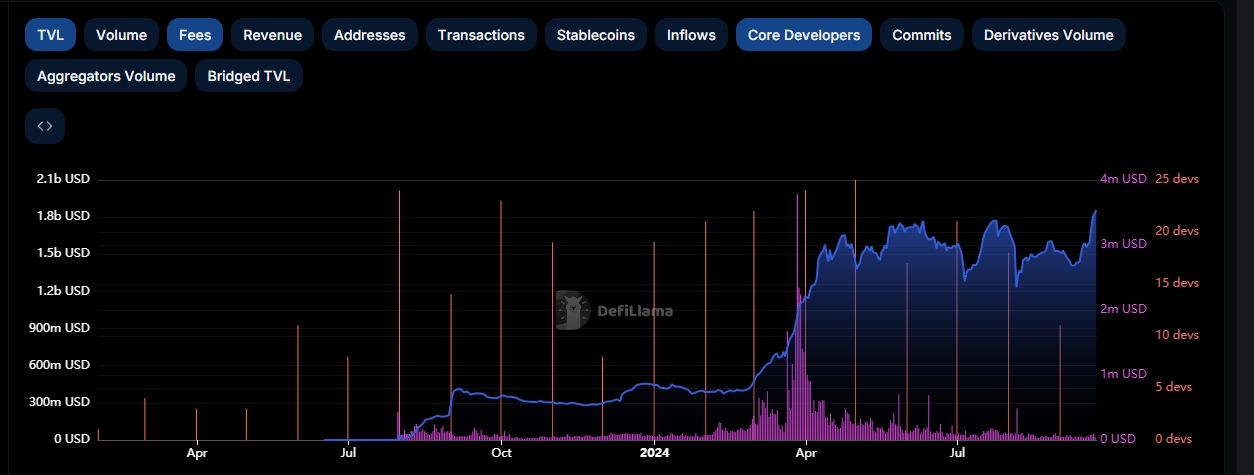Written by: Asher Zhang
Ethereum co-founder Vitalik Buterin said when participating in TOKEN 2049: The current crypto industry is no longer in its early stages, but it is still in its early stages in terms of "actual usability." Overall, the current status of the crypto industry is indeed like this. The previous performance bottleneck is no longer a constraint, and actual adoption is the problem.
Currently, on mainstream public chains or Layer2, apart from the extremely active wool-pulling activities, there are few real use cases. Since the beginning of this year, as soon as many airdrops ended, the on-chain data fell sharply. The main reason for this phenomenon is the lack of a breakout track like DeFi and applications like Uniswap. However, the encryption industry is developing rapidly, Bitcoin and Ethereum have been accepted by the mainstream financial market, and many traditional institutions have also laid out different Web3 tracks. The future of the encryption industry is promising. This article takes stock of the most promising public chains and Layer2 from the perspective of adoption.
Ripple
Although Ripple and XRP are not very popular in the crypto market and their gains so far this year are not impressive, Ripple is still quite influential from an adoption perspective.
Ripple uses a decentralized consensus mechanism called the Ripple Protocol Consensus Algorithm (RPCA). Using Ripple, global transfers and settlements can be completed in seconds. Compared to the traditional banking system, Ripple's transaction confirmation time is greatly shortened, making it an ideal solution for cross-border remittances. Ripple works with many financial institutions, banks, and payment processing companies, including Santander, American Express, Standard Chartered, etc. Through these collaborations, Ripple's payment technology has been more widely used in the global financial system.
Although Ripple has achieved great success, its token XRP is quite controversial. Previously, the U.S. Securities and Exchange Commission (SEC) accused Ripple of illegally selling unregistered securities XRP; however, the case has made great progress recently, and Ripple has gradually gained the upper hand. Let's briefly sort out the general context of this case.
A court ruling in July 2023 declared that "XRP itself is not a security", and a federal judge in October decided to dismiss the SEC's appeal. On October 20, Ripple announced that the US SEC had dropped all charges against its CEO Brad Garlinghouse and Executive Chairman Chris Larsen. On August 8, 2024, Analisa Torres, a district judge in the Southern District of New York, ruled that Ripple's programmatic sales of XRP to retail customers through its trading platform did not violate federal securities laws. However, Ripple's 1,278 institutional sales transactions violated securities laws and fined it $125.035 million, far less than the $1 billion in disgorgement and prejudgment interest and $900 million in civil penalties required by the SEC.
Toncoin
In this round of crypto market bull market, big innovations are lackluster, but the endless Meme and Ton mini-game projects have attracted a large number of users. In the Ton ecosystem, Notcoin was the first to explode. Since its launch on January 1, 2024, its popularity has surged, and the number of participants in the game soon exceeded 30 million. After Notcoin became popular, "Tap to Earn" projects on the TON ecosystem received a lot of attention, including Hamster Kombat and Catizen. Among them, Catizen is a TON ecosystem on-hook cat-raising chain game created by the Pluto Studio team. It is the first game on its GameFi platform, with nearly 20 million registrations in just 2 months. Overall, the encrypted narrative of the mini-program chain game in the Ton ecosystem has become a track that cannot be ignored in this round of bull market.
The reason why the mini-game projects in the Ton ecosystem have become so popular is mainly due to Telegram. The predecessor of Ton was developed by the Telegram team. Later, due to the supervision of the US SEC, the Telegram team opened Ton to the community. TON uses a unique multi-layer multi-chain architecture to achieve high speed and scalability, which allows it to carry a large number of users. Earlier, Telegram and Ton were integrated, which enabled mini-game projects built on TON to quickly acquire customers from Telegram.
In fact, many Ton mini-game projects are similar to Meme projects, but they only add some small gameplays, and there is not much innovation in essence. Many are essentially a combination of traditional Web2 mini-games and DeFi gameplay, but because they are backed by the big tree of Telegram, their user base is very large. Although it is not very good from the perspective of innovation, it is also the first stop for many Web2 users to enter Web3, and its significance is still very huge.
Base
Base is an Ethereum second-layer network (Layer 2) launched by Coinbase, the largest cryptocurrency exchange in the United States. Growthepie data shows that as of August 15, the number of intraday transactions processed by the Ethereum Layer 2 ecosystem has exceeded 13 million (about 13.15 million to be specific), and the daily transaction volume has hit a record high. The driving force behind the overall increase in Layer 2 ecological transaction data is the Base network. During the same period, Arbitrum had about 1.8 million intraday transactions, Op Mainnet had only 470,000 transactions, and the daily transaction volume of the Ethereum mainnet remained at around 1.1 million transactions for most of this year. As of September 22, according to Deflama data, Base's TVL currently ranks sixth.

In addition, the developer activity and fee income on Base are very high, and in just over a year it has become the undisputed Layer2 leader.

The more well-known applications on Base include Farcaster and others. Farcaster is a decentralized social network protocol. At its peak in July this year, Farcaster had more than 100,000 daily active users, and even now it still maintains 70,000 daily active users. Although its daily active users cannot be compared with the mini-program projects on Ton, it is already very high in the crypto market. In addition, Farcaster's products are quite innovative. Meme tokens have been popular recently, and Farcaster's plug-in can reach these messages to users in a timely manner, which has led to more and more Meme projects starting to publish information through Farcaster. At the same time, a large number of users have also begun to flock to Farcaster to get the most timely news. In addition, Farcaster founder Dan has also developed a Warpcast application based on the Farcaster protocol. In addition to traditional social functions, Warpcast also introduces functions such as channels and actions, thereby deriving more ways of interaction. This kind of crypto social innovation is quite meaningful and is expected to become the leader of SocialFi in the real Web3 world.
Solana
Solana has received a lot of attention in this round of bull market. In the early days, the DePIN track in the Solana ecosystem was highly anticipated by the market, and a number of leading projects emerged, such as Render, Helium, etc.; subsequently, leading projects also emerged in the full-chain game, AI and other tracks in the Solana ecosystem; recently, the overall performance of the crypto market has been weak, but the MEME track has once again made Solana the focus of attention. Pump.fun on Solana directly promotes the Meme coin craze. Users can easily create Meme tokens on the platform without providing liquidity. According to DefiLlama data, pump.fun generated $48 million in revenue in the second quarter, with an average daily revenue of $525,000. With the popularity of pump.fun, DeFi on Solana has also ushered in tremendous development.
Some time ago, Solana released three innovative technologies, Actions, Blinks, and ZK Compression, which were well received by the market. Solana Actions is an API designed to allow websites to interact with the Solana blockchain to implement on-chain activities such as transfers, voting, and donations. Blinks is a concrete representation of Actions, which can be a QR code, a URL, a clickable button, and so on. ZK Compression uses a process called state compression to enable developers to use Solana's ledger space in a more economical way, rather than more expensive account space, to store certain types of data.
However, Solana's development is also facing new difficulties. From the perspective of technological development, with the popularity of modularization and the continuous development of L2, the cost of Dapp launching application chains is getting lower and lower. In order to capture more value, many Dapps have chosen to launch their own chains. Among them, the most well-known is the decentralized contract exchange DYDX. Faced with this situation, Solana is now considering turning to Layer2. However, if Solana adopts an L2 expansion model similar to Ethereum, SOL may become the new ETH, and Ethereum is in an absolute leading position in this regard.
Ethereum and its Layer 2 faucet
From a technical perspective, Ethereum and its Layer2 leaders are indeed unquestionable, but from the perspective of application adoption, Ethereum and its Layer2 leaders are indeed lackluster. Before the Ethereum Layer2 leader issued its coin, its data was as dazzling as its price fell after issuing its coin. The reason behind this is that Ethereum's Layer2 development strategy is still in the stage of technological breakthrough. The most important of these is cross-Layer2 interoperability.
There are too many Layer2s on Ethereum now, and the standards of each Layer2 are different, which makes Layer2 an island effect, and Layer2 interoperability has become a huge limitation that inhibits the development of Ethereum applications. At present, cross-Layer2 interoperability has made great progress, and the aggregation networks AggLayer, Avail, Hyperlane and LayerZero developed by Polygon Labs have made great progress.
From the perspective of application construction, Arbitrum and Optimism have developed the best. Arbitrum has attracted many companies to participate in ecological construction, including heavyweight company Franklin Templeton and Securitize, which helps BlackRock tokenize assets. Arbitrum Foundation announced that it will cooperate with popular NFT brands Azuki and ApeCoin. Other projects developed based on Arbitrum include the once popular Web3 games Xai and XPET. Optimism focuses on expanding its super chain ecology. Currently, there are many Layer2s built using Op Stack, including Base, opBNB, Zora Network, DeBank Chain, etc.
Summarize
At present, the technology of the crypto market is beginning to mature, but in essence, this puzzle is still missing some pieces, such as cross-Layer2 interoperability, so the focus of developers is still on the final stage of the stage. But the crypto market is also in the next stage, that is, the stage of large-scale adoption of crypto technology. Among them, Ripple has a large scale due to its early involvement in finance; Ton and Base have developed rapidly due to the support of big trees, but there are no truly disruptive applications yet. As for other public chains and Layer2, the development in the application adoption stage is still relatively slow. In the future, with the realization of cross-Layer2 and cross-chain interoperability, the focus of developers will shift to application construction, and they will promote the prosperity of Web3 together with users coming in through channels such as Ton and Base.







